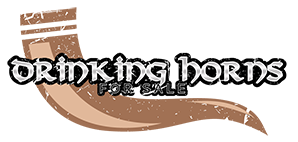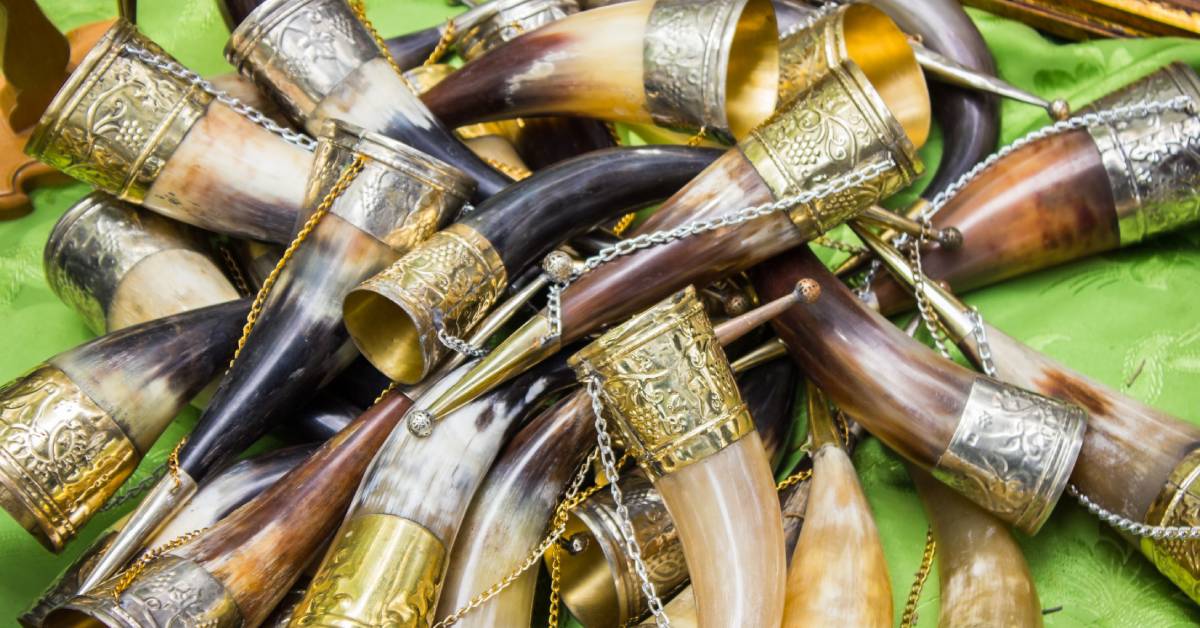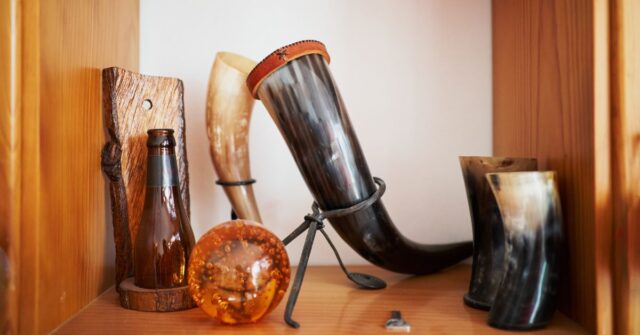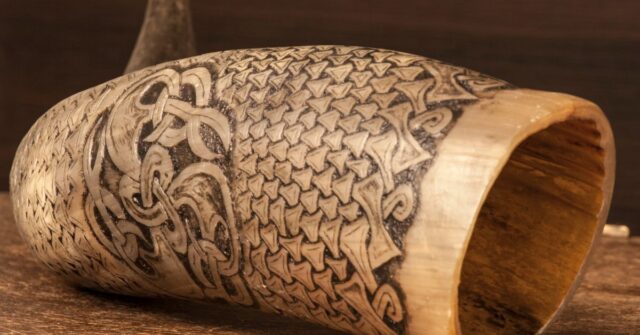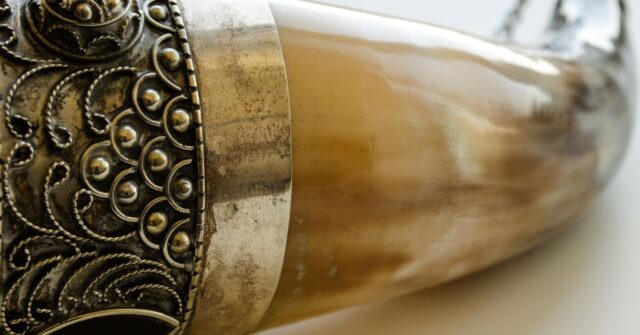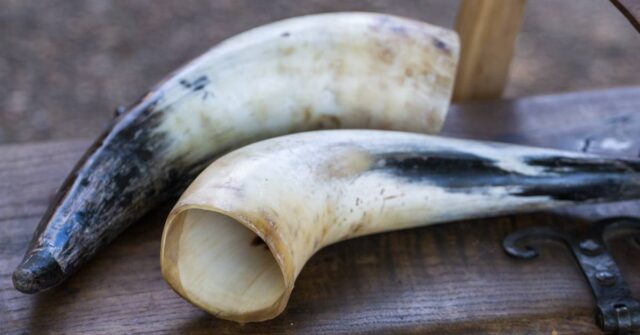From the regal banquet halls of ancient civilizations to the rustic mead taverns of the medieval age, drinking horns have long been a symbol of power, opulence, and cultural tradition.
This comprehensive guide takes an in-depth look at the various materials and processes involved in producing these iconic drinking vessels.
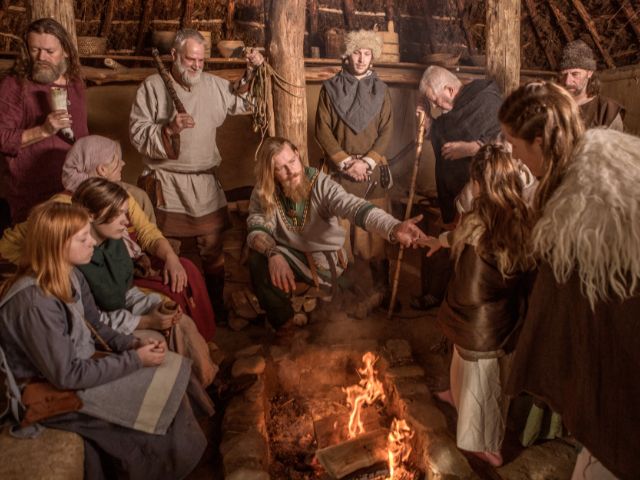
Introduction to Drinking Horns
Before we delve into the materials and methods of making drinking horns, it’s essential to understand their historical context and cultural significance.
These fascinating vessels provide a snapshot into past cultures and traditions, shedding light on the resourcefulness and artistry of our ancestors.
History and Significance of Drinking Horns
Drinking horns date back as early as the Iron Age, used by ancient societies such as the Greeks, Romans, and the Norse during the Viking Age.
These vessels were considered status symbols and were frequently used in rituals and celebratory ceremonies. Their shape, size, and decoration often reflected the owner’s status within the community.
The Cultural Importance of Drinking Horns
Drinking horns hold a significant place in many cultures, serving both functional and symbolic roles. In Norse mythology, gods like Odin and Thor were often depicted drinking from horns.
Similarly, in medieval Europe, these horns signified nobility and power. Today, they are cherished collectibles, echoing the values and aesthetics of ancient times.
Materials Involved in Drinking Horn Production
The manufacture of drinking horns involves a combination of raw materials, each contributing to the vessel’s final form, functionality, and aesthetic appeal. Let’s explore these materials in more depth.
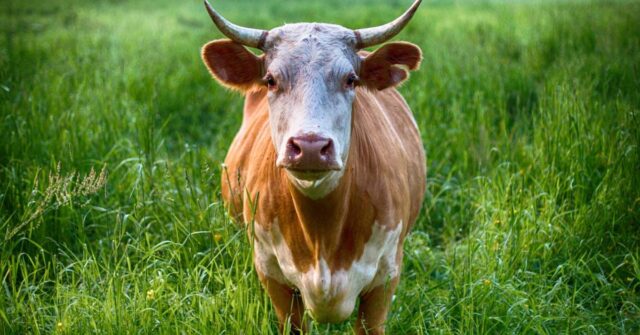
Animal Horns: The Primary Raw Material
The primary material in drinking horn production is, as the name suggests, animal horns.
These horns, usually obtained from cattle or goats, are chosen for their size, thickness, and robustness. These are naturally hollow, making them ideal for holding liquids.
Types of Animal Horns Used
Commonly, bovine horns are used due to their size and availability.
However, horns from other animals such as goats, sheep, or buffalo can also be used, with each type offering unique properties in terms of color, texture, and shape.
Rarely, larger horns like those of aurochs or bison might be used for more grandiose pieces.
Procurement and Ethical Considerations
Horns are typically procured as a by-product of the meat industry, ensuring no additional harm comes to animals purely for horn collection.
It’s crucial for manufacturers to source their materials ethically, promoting animal welfare and sustainable practices.
Other Raw Materials Used
In addition to animal horns, other materials are often incorporated into the making of drinking horns to enhance their functionality and decorative appeal. These may include metal, wood, and leather.
Metal Elements
Metal, often brass or silver, is typically used for decorative accents or for creating a sturdy rim around the horn’s opening. In some cases, these metal elements may also be engraved or embellished for added visual impact.
Wooden Components
Wood is commonly used to create a stand for the horn, allowing it to be displayed when not in use. The choice of wood can vary, with denser, more durable types preferred for their longevity.
Leather Elements
Leather is often used as a grip, providing a comfortable hold and adding an aesthetic touch. It might also be used to create a sheath or case for the horn.
Alternative Materials for Drinking Horn Production
While animal horns remain the traditional choice for drinking horn production, modern interpretations have embraced alternative materials such as glass and plastic.
These materials offer different aesthetic and functional properties, expanding the range and versatility of drinking horn designs.
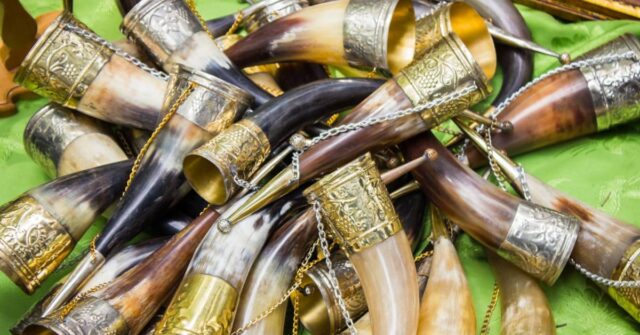
Glass Drinking Horns
Glass drinking horns combine the classic shape and form of traditional drinking horns with the clarity and elegance of glass.
These horns may be hand-blown, offering a level of craftsmanship similar to traditional horn carving. The use of glass allows for a variety of colors and effects, from clear, crystal-like finishes to vibrant, colored designs.
Plastic Drinking Horns
Plastic drinking horns offer a more economical and durable alternative. They are lightweight, easy to clean, and can withstand the rigors of modern life, making them a popular choice for events like festivals or Renaissance fairs.
Plastic horns can be produced in a wide range of colors and sizes, and some may even replicate the look of natural horns.
While these alternatives lack the historical authenticity of animal horns, they offer unique benefits and appeal to different tastes and needs.
It’s worth noting that regardless of the material, the spirit of the drinking horn — a vessel for celebration and camaraderie — remains the same.
Process of Drinking Horn Production
The process of crafting a drinking horn is an art that requires skill, patience, and an understanding of the materials at hand. It involves a series of steps from initial cleaning and preparation to final finishing.
Cleaning and Preparation of Animal Horns
The first step involves cleaning the raw horn, removing any leftover organic material, and scraping away the outer layer of keratin.
This step prepares the horn for shaping and carving, ensuring a smooth and clean surface to work on.
Shaping and Carving the Horn
Once cleaned, the horn is then heated and reshaped. This process often involves the use of tools like rasps and sandpaper to smooth out any imperfections.
At this stage, the horn might also be carved with intricate designs, patterns, or symbols, adding to its unique character.
Decorating the Drinking Horn
The decoration is an important aspect of drinking horn production, turning a simple vessel into a piece of art. The methods and materials used for decoration can greatly vary, providing each horn with a distinct identity.
Engraving Techniques
Engraving is a common technique used to add intricate designs to the horn’s surface. This could involve carving out patterns, inscribing runes or symbols, or even creating detailed scenes inspired by historical or mythological events.
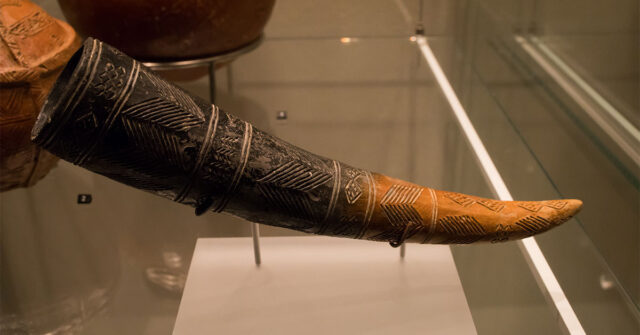
Use of Precious Metals
Precious metals like gold or silver might also be used to adorn the drinking horn. This could involve inlay work, gilding, or creating metal bands with complex designs.
Such embellishments not only enhance the horn’s visual appeal but also signify the status and wealth of its owner.
Sealing and Finishing the Drinking Horn
Once decorated, the horn is then sealed. This is a crucial step, ensuring the horn is safe for drinking and prolonging its lifespan.
The sealing process might involve the use of natural beeswax or other food-safe sealants. The final step involves polishing the horn, enhancing its natural shine, and bringing the intricate designs to life.
Drinking Horn Types and Variations
Over the centuries, numerous variations of drinking horns have emerged, each reflecting the cultural nuances of their time and place. Below, we explore some of these variations in more detail.
Viking Drinking Horns
Viking drinking horns are perhaps the most recognized type. These were often large and elaborately decorated, reflecting the bold and heroic spirit of the Viking Age.
Their decorations often included runic inscriptions or motifs inspired by Norse mythology.
Medieval Drinking Horns
In the Middle Ages, drinking horns became a symbol of nobility. These were often adorned with precious metals and gems, showcasing the wealth and status of their owners.
The designs during this period became more intricate, often reflecting religious or chivalric themes.
Modern Interpretations and Variations
In recent years, drinking horns have seen a resurgence as a unique and quirky alternative to conventional drinkware.
Modern interpretations of these traditional vessels might incorporate contemporary aesthetics, pop culture themes, or personalized designs, while still respecting the craftsmanship of their historic counterparts.

Quality and Authenticity Factors in Drinking Horns
When it comes to evaluating a drinking horn, several factors come into play. These range from the authenticity of the materials used to the quality of craftsmanship. Here’s what to look for when assessing a drinking horn.
Identifying Genuine Animal Horns
Genuine animal horns have a unique texture, color, and pattern that is hard to replicate with synthetic materials. Look for the variations and nuances in the horn’s surface that indicate its natural origin.
It’s also important to consider the source of the horns, ensuring they have been ethically procured.
Assessing Craftsmanship and Artistry
The quality of a drinking horn is largely determined by the skill of its maker. High-quality drinking horns showcase a fine balance between functionality and aesthetics.
Look for clean and smooth finishes, detailed carvings, well-fitted metal or wood components, and a sturdy, comfortable grip.
Evaluating the Sealing Process
The sealing process is a critical factor in the usability of a drinking horn. A well-sealed horn should be watertight and safe for drinking.
The sealant should be food-safe and durable, capable of withstanding the acidity of various beverages without altering their taste.
Drinking Horn Maintenance and Care
With proper care and maintenance, a drinking horn can last for years, even generations. The following sections cover some essential tips to keep your drinking horn in good shape.
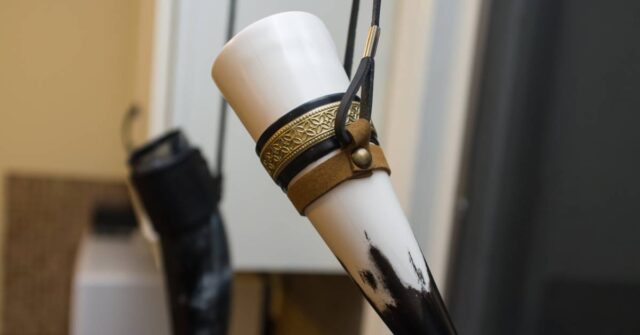
Cleaning and Storing Your Drinking Horn
Drinking horns should be cleaned immediately after use, using warm water and mild soap. They should never be left soaking or put in a dishwasher.
After washing, the horn should be dried thoroughly to prevent any moisture buildup. When storing, keep your horn in a cool, dry place, away from direct sunlight.
Prolonging the Lifespan of a Drinking Horn
A well-cared-for drinking horn can last a lifetime. This involves regular cleaning, careful handling, and occasionally resealing the inside with beeswax or a similar food-safe sealant.
It’s also crucial to avoid using the horn for hot beverages, as heat can damage the horn and compromise the sealant.
Conclusion: The Art and Craft of Drinking Horn Production
From the sourcing of materials to the final finishing touches, the art of drinking horn production involves a fascinating blend of tradition, craftsmanship, and cultural appreciation.
Whether used for ceremonial purposes or simply as an intriguing addition to your drinkware collection, each drinking horn carries with it a rich tapestry of history and heritage.
